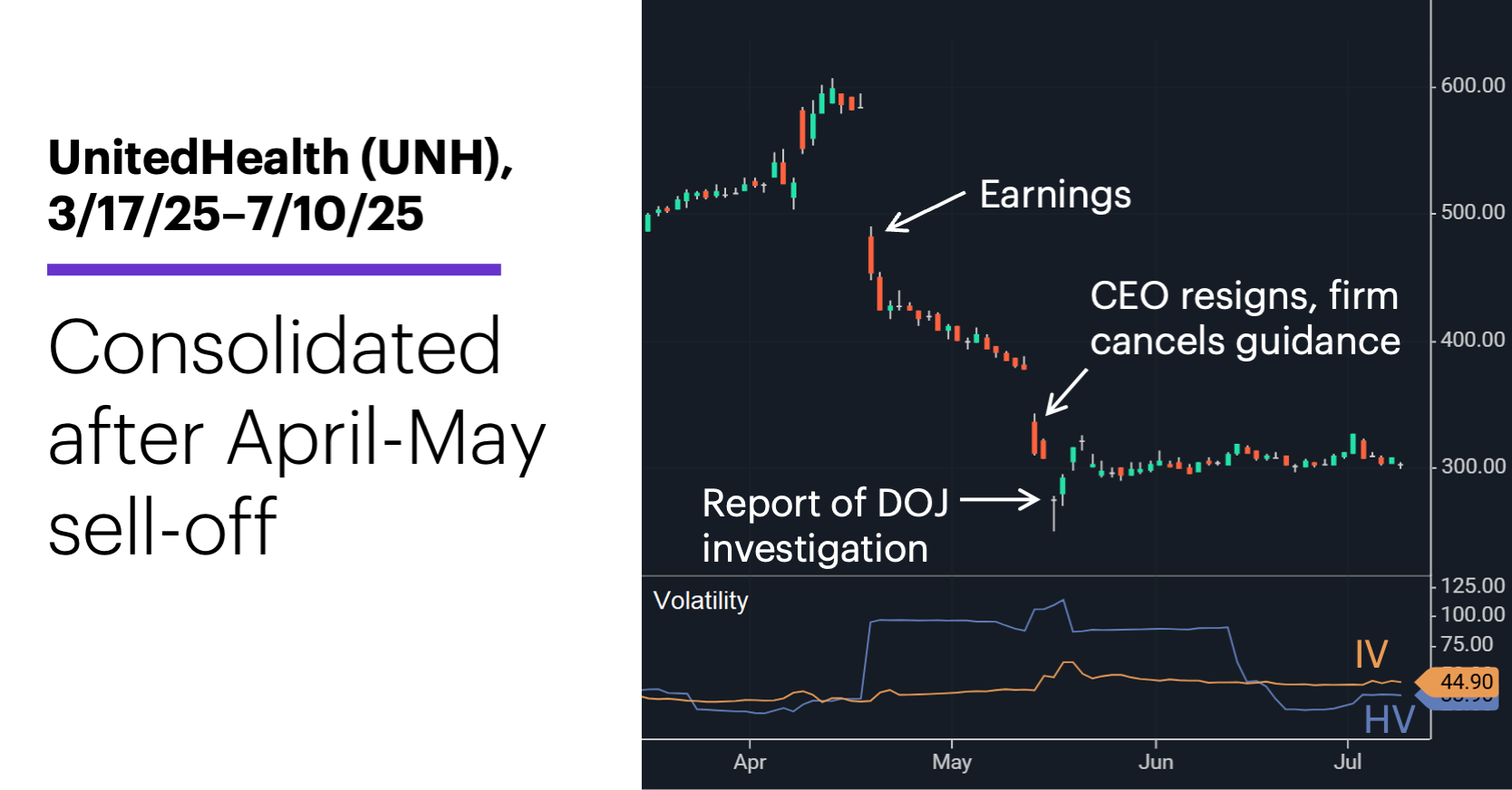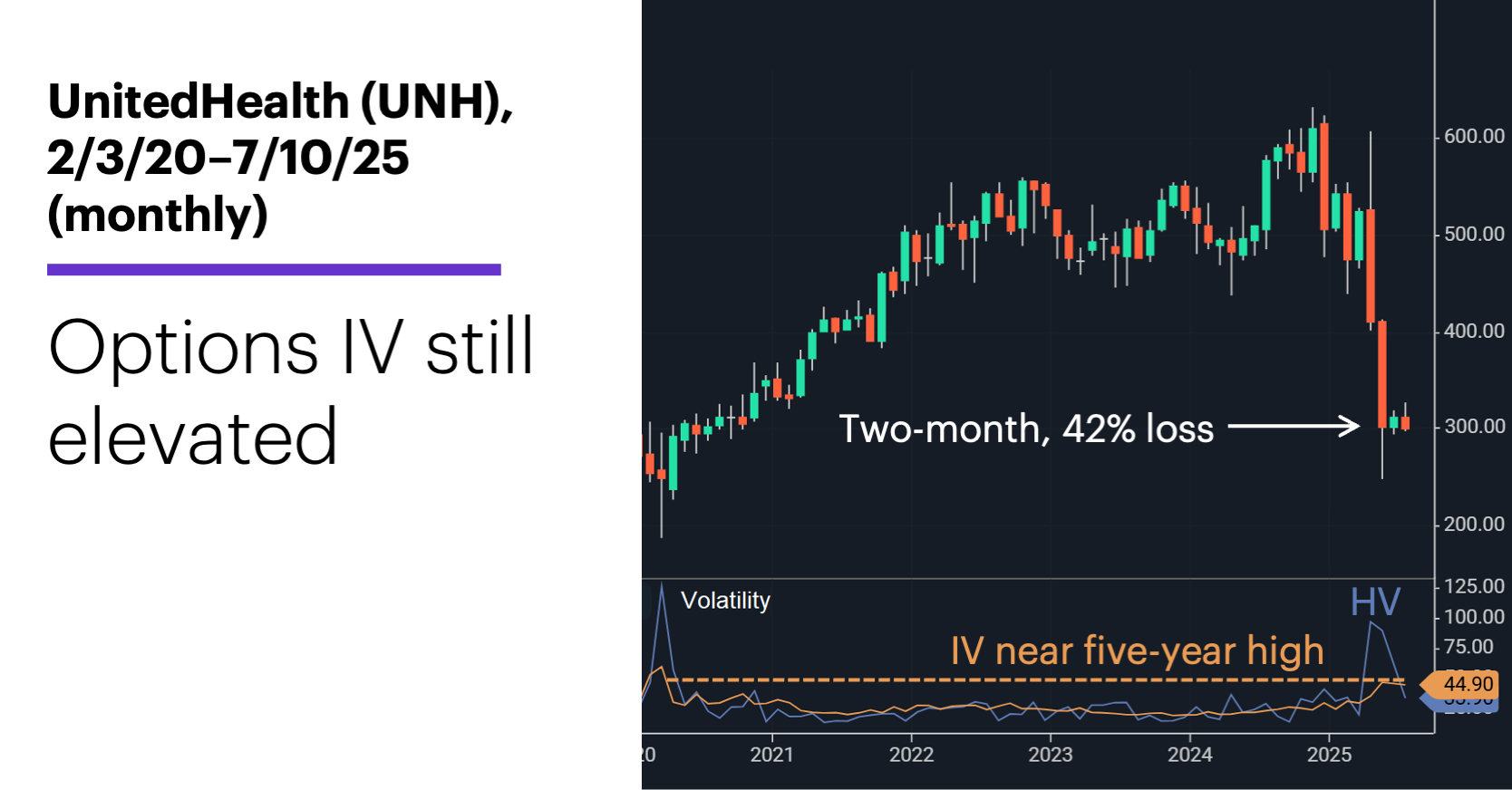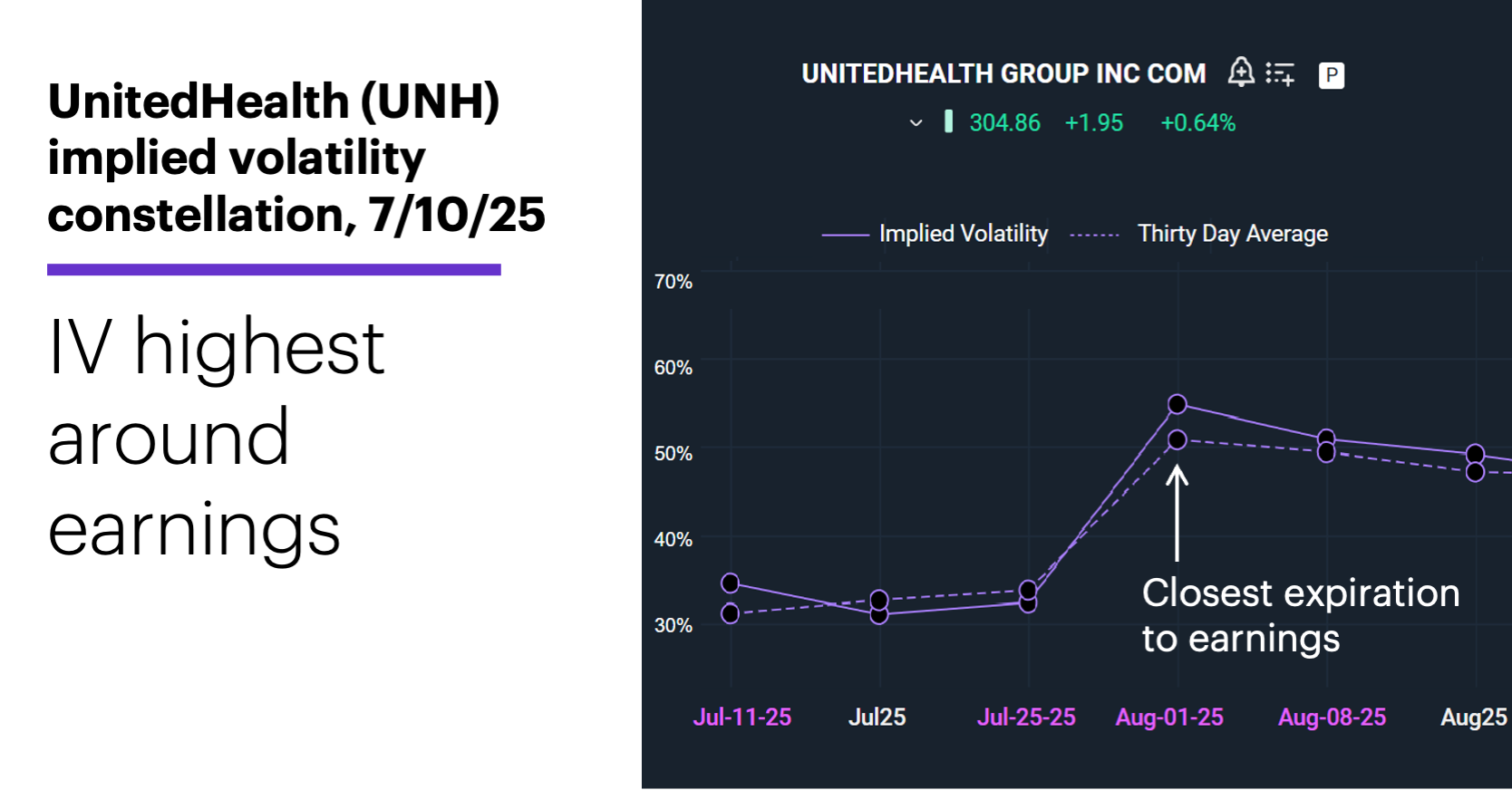Sell-offs, rebounds, and risk
- UNH fell more than 40% in April-May
- Stock volatility down, but options volatility still high
- Long-short options spreads may help manage risks
Health insurer UnitedHealth (UNH) has traded relatively quietly over the past several weeks since weathering a series of volatility-inducing events in April and May:

Source: Power E*TRADE. (For illustrative purposes. Not a recommendation.)
An earnings miss (and lowered guidance) on April 17 was followed by the resignation of the company’s CEO and the cancellation of 2025 guidance on May 13. Two days later, the stock again gapped lower on reports of a Department of Justice (DOJ) investigation into the firm’s practices.
Although shares quickly rebounded more than 26% off the five-year intraday low of $248.88 they hit on May 15 (at which point the April-May sell-off had reached -52%), the stock still ended the month 42% below its March close:

Source: Power E*TRADE. (For illustrative purposes. Not a recommendation.)
For the sake of argument, let’s say the stock’s stabilization in recent weeks prompted some traders to consider the potential for further upside, as well as using options to increase their leverage and/or manage risk. (While noting the stock’s elevated risk in the wake of the April-May events, as of Thursday, Morgan Stanley & Co. research had a 12-month price target of $374 for UNH.1) Both charts highlight a condition that should factor into any options trader’s decision-making process. While the daily chart shows options implied volatility (IV, orange line) was down slightly from its mid-May peak, the monthly chart shows it’s still near its highest level of the past five years. In both cases, IV is higher than historical volatility (HV, blue line).
The implication is that, because high IV tends to inflate options premiums, UNH options could be expensive relative to historical norms. The stock’s “volatility constellation,” which maps the IV at each upcoming options expiration, adds another layer to this discussion:

Source: Power E*TRADE. (For illustrative purposes. Not a recommendation.)
Options IV jumps with the August 1 expiration, which happens to be three days after UNH’s next scheduled earnings release on July 29. The chart is showing that these options, as well as the next three expirations, may be the most relatively overpriced because, unlike the July options, they’re exposed to earnings uncertainty.
In addition to possible depreciation from falling IV, long options always lose some of their value over time. However, that doesn’t mean traders have to sell options instead of buying them. In addition to simply avoiding overpriced options, they may also choose to sell options, or combine long and short options. The latter approach can potentially offset some of the drawbacks of buying options in a high-IV environment.
One of the better-known examples is the “vertical spread.” Instead of simply buying, say, an at-the-money call option to trade an expected up move, a trader would simultaneously sell a higher-strike call with the same expiration. Unlike the long call, the short call benefits from the passing of time and declining IV. While this type of position caps potential profits, it also has limited risk and a lower price of entry than a long-call trade.
Click here to log on to your account or learn more about E*TRADE's trading platforms, or follow the Company on Twitter, @ETRADE, for useful trading and investing insights.
1 MorganStanley.com. Comments on Recent Negative Headlines and Feedback. 5/15/25.